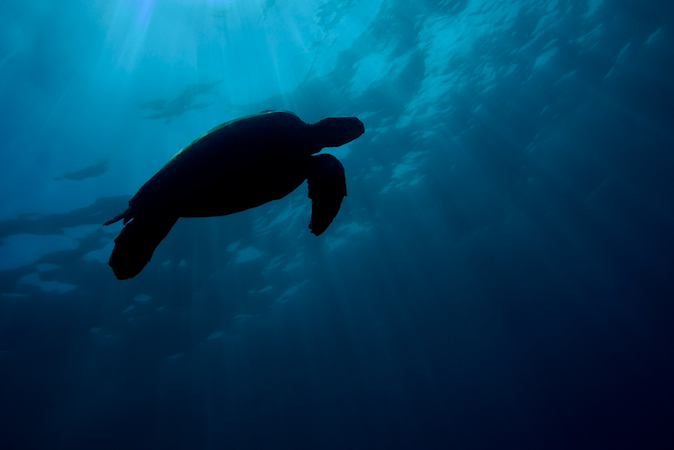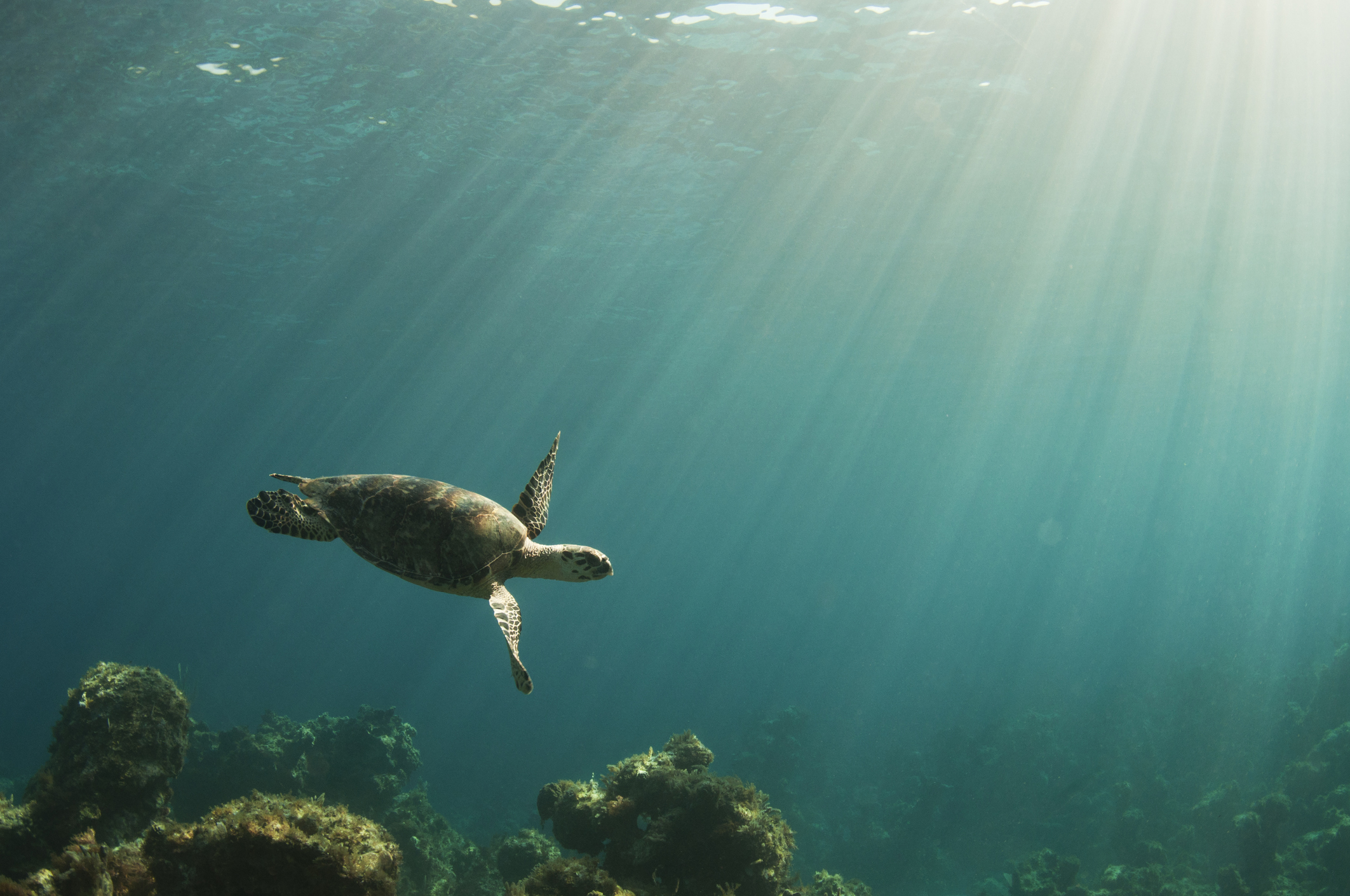
Ocean Pollution & Sea Turtles
Sea turtles are vulnerable to ocean pollution at all stages of life, from eggs to hatchlings to juveniles to adults. Pollutants include things like toxic metals, pcb's, petroleum products, and agricultural and industrial runoff of contaminants such as fertilizers, chemicals, nutrients, and untreated waste. Pollutants may cause immediate harm to sea turtles through direct contact or can build up in tissues over time and lead to immunosuppression resulting in disease and death.
Degradation of sea turtle habitat from pollution also poses a threat and can occur over large areas. Sea turtle habitat overlaps with areas most likely to be affected by offshore oil exploration and production. Petroleum pollution occurs from intentional discharge from vessels, vessel groundings, offshore oil exploration and production, transport of oil products, spills, and runoff of oil from land based sources.
Oil from spills far offshore concentrate along convergence zones (where currents meet) which is are important areas for young turtle development. Oil from spills offshore also washes up on beaches where it degrades nesting habitat, and can impact nests, nesting females, and hatchlings making their way to the water.
Sea turtles are also affected by ingesting food contaminated by oil or tar balls. Tar balls form when crude oil floating in the water degrades. A large percentage of dead hatchlings whose stomach contents have been examined have ingested tar balls.
Fibropapillomas
This disease is a threat to sea turtle populations worldwide. Also known as "FP", this disease causes cauliflower-shaped tumors on external soft parts and internal organs of a sea turtle. The exact cause of FP is still unknown, however, researchers believe there is a link to ocean pollution. External FP tumors can create drag and slow sea turtles down making them more vulnerable to predation and collisions with boats.
Tumors around the eyes can obscure vision and eventually cause blindness, and tumors around the mouth can impair breathing and feeding. In some areas, many stranded and dead turtles have FP tumors. Research is still being done to determine the exact cause and transmission of this disease.
FP was first seen in the 1930's in green turtles in the Florida Keys. In Hawaii, FP was not seen until the late 50's. It was first only observed in isolated areas but now occurs worldwide and in other species including loggerheads, Kemp's and olive ridleys, and flatbacks. Over 50% of green turtles found in Florida's Indian River are afflicted.
Ocean Pollution & Sea Turtles
Toxic metals may concentrate in the liver and kidneys of sea turtles. Toxins like mercury also pose a threat to human health.
Chronic exposure to pollutants makes sea turtles susceptible to disease and death. Chronically ill turtles are also more vulnerable to predation and collisions with boats.
PCB's, or polychlorinated biphenyl's, despite being banned from production in the U.S. in 1979, are still found in the environment, and in materials produced prior to the ban. Organisms that ingest these chemicals may suffer from depressed immune systems, illness, disease, and impaired reproduction. Researchers have found PCB's in sea turtle eggs.
What is SEE Turtles?
We're a nonprofit organization that protects sea turtles through conservation travel and volunteer tours, our Billion Baby Turtles, Too Rare To Wear, & Sea Turtles & Plastic programs, our education programs, and by promoting inclusivity in the sea turtle community. Our award-winning programs help save sea turtle hatchlings on important nesting beaches around the world, work with the tourism industry to end the turtleshell trade, and get plastic out of sea turtle habitats. Learn more about our organization.

